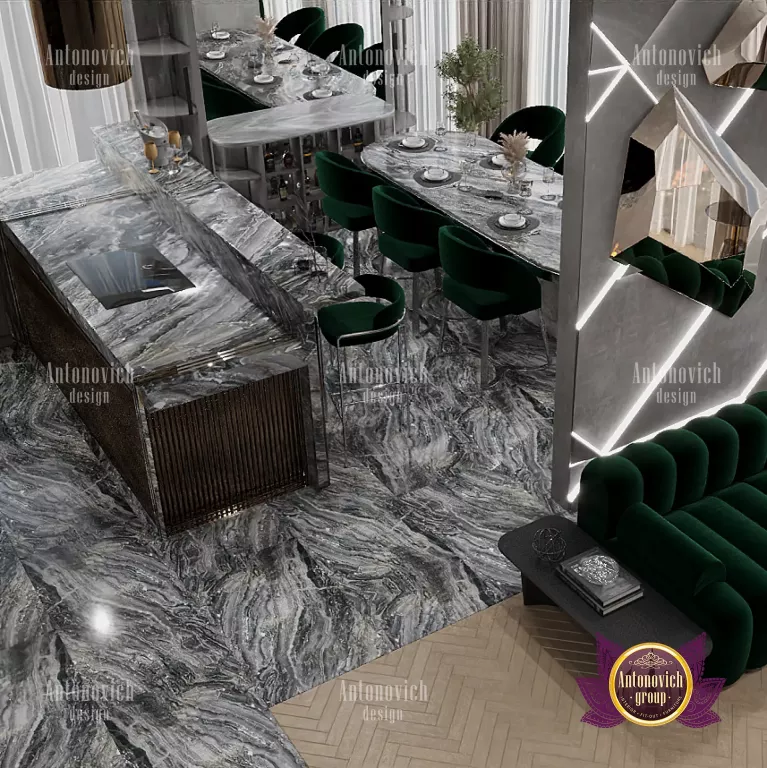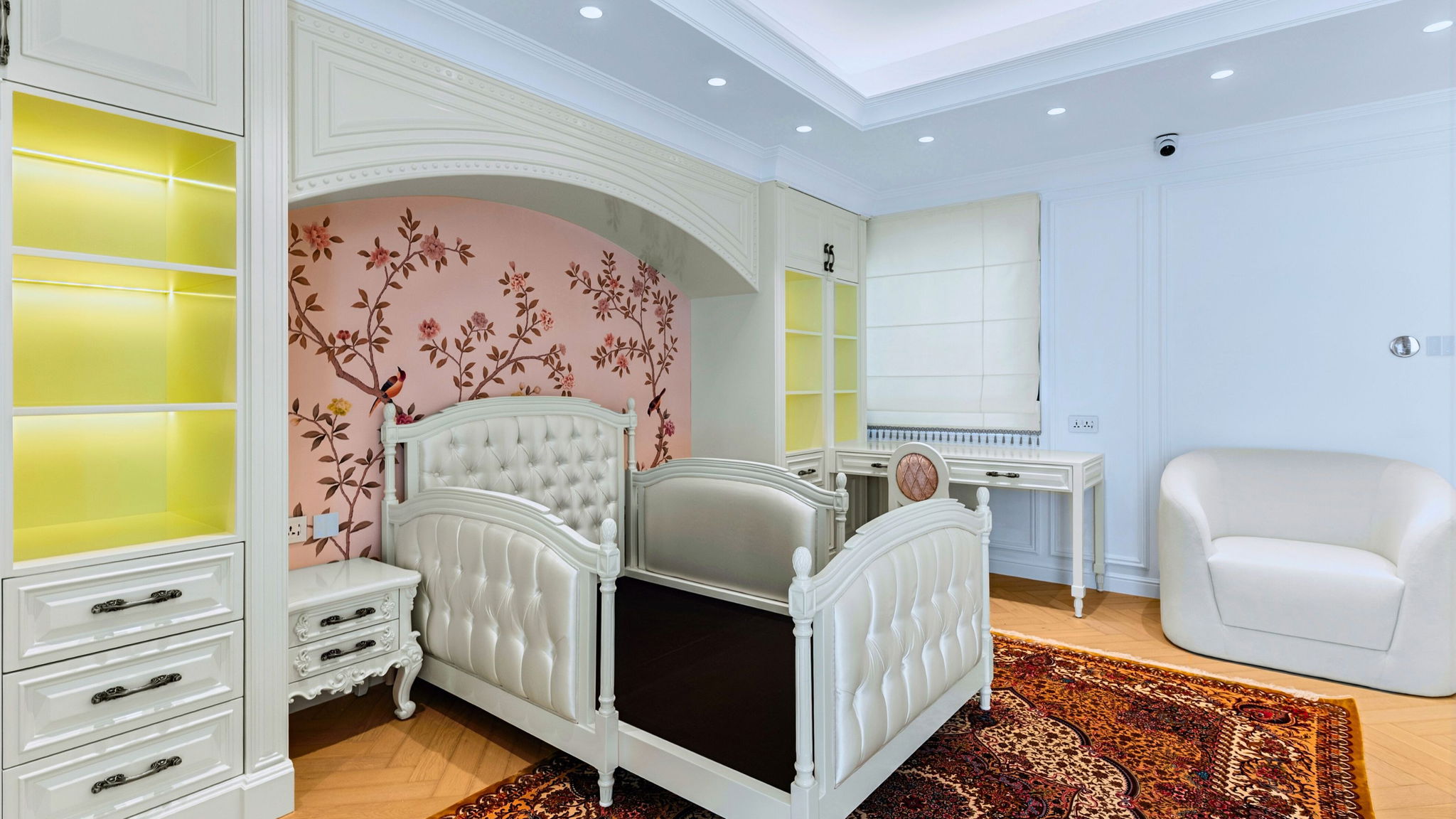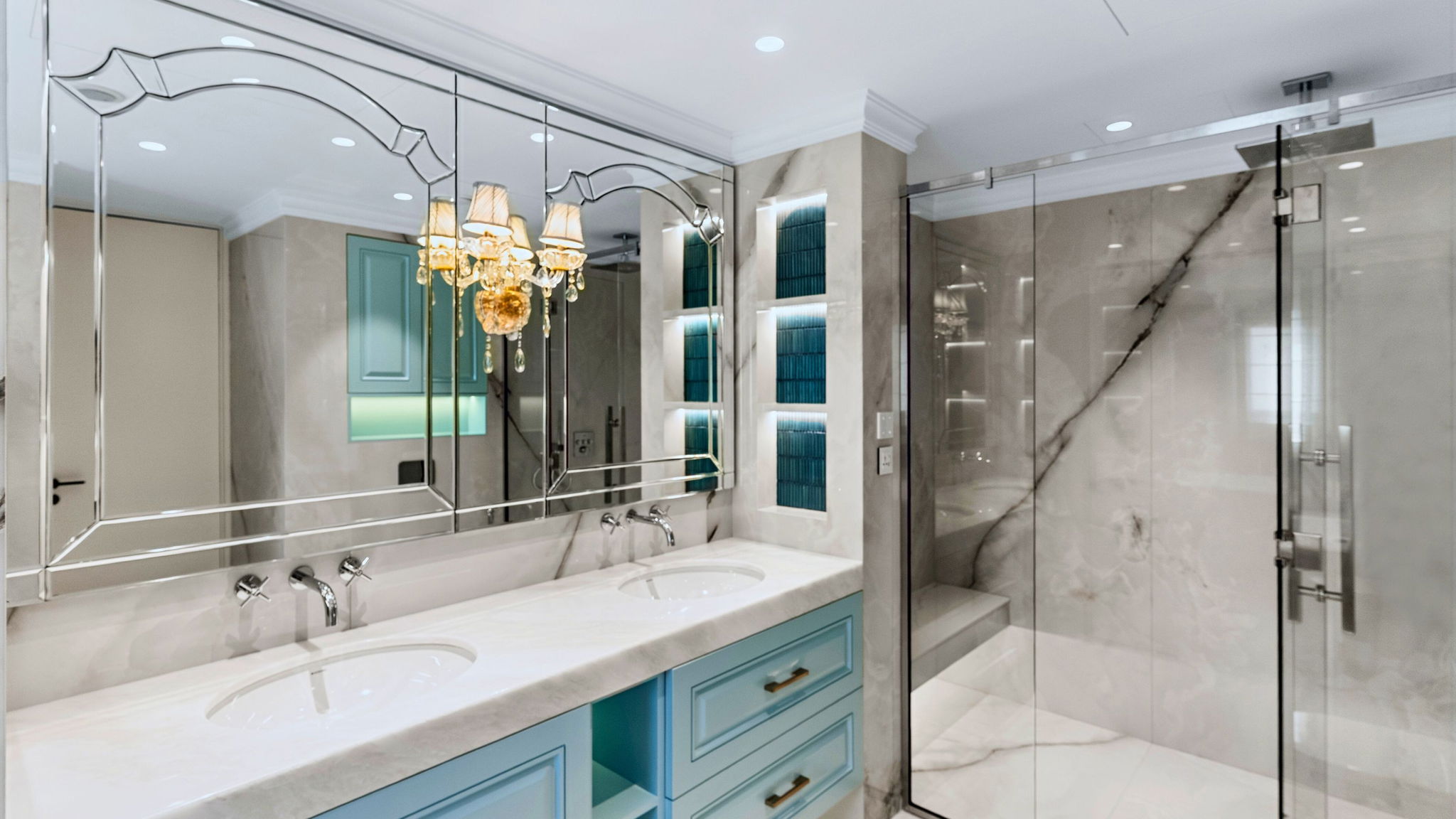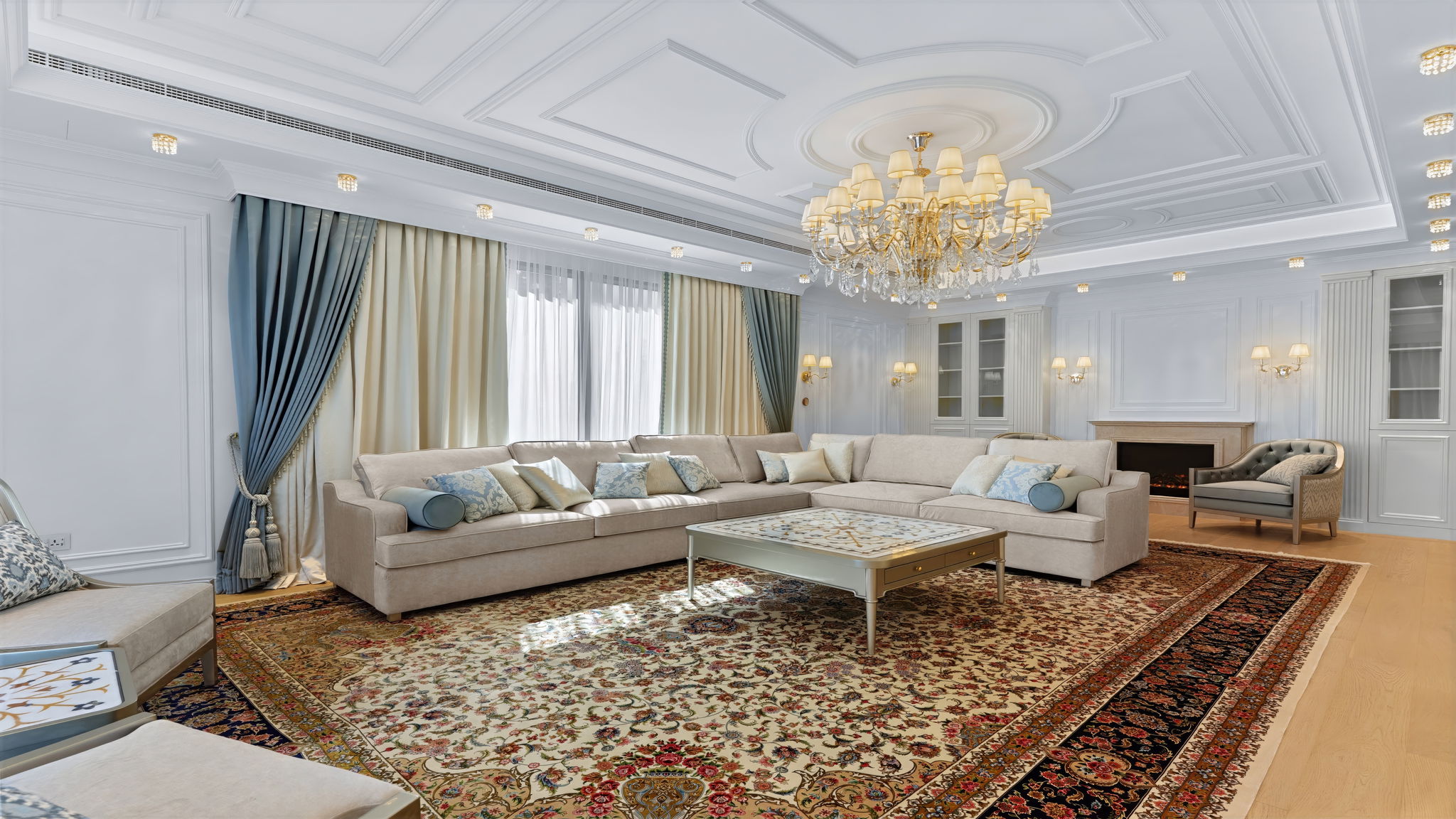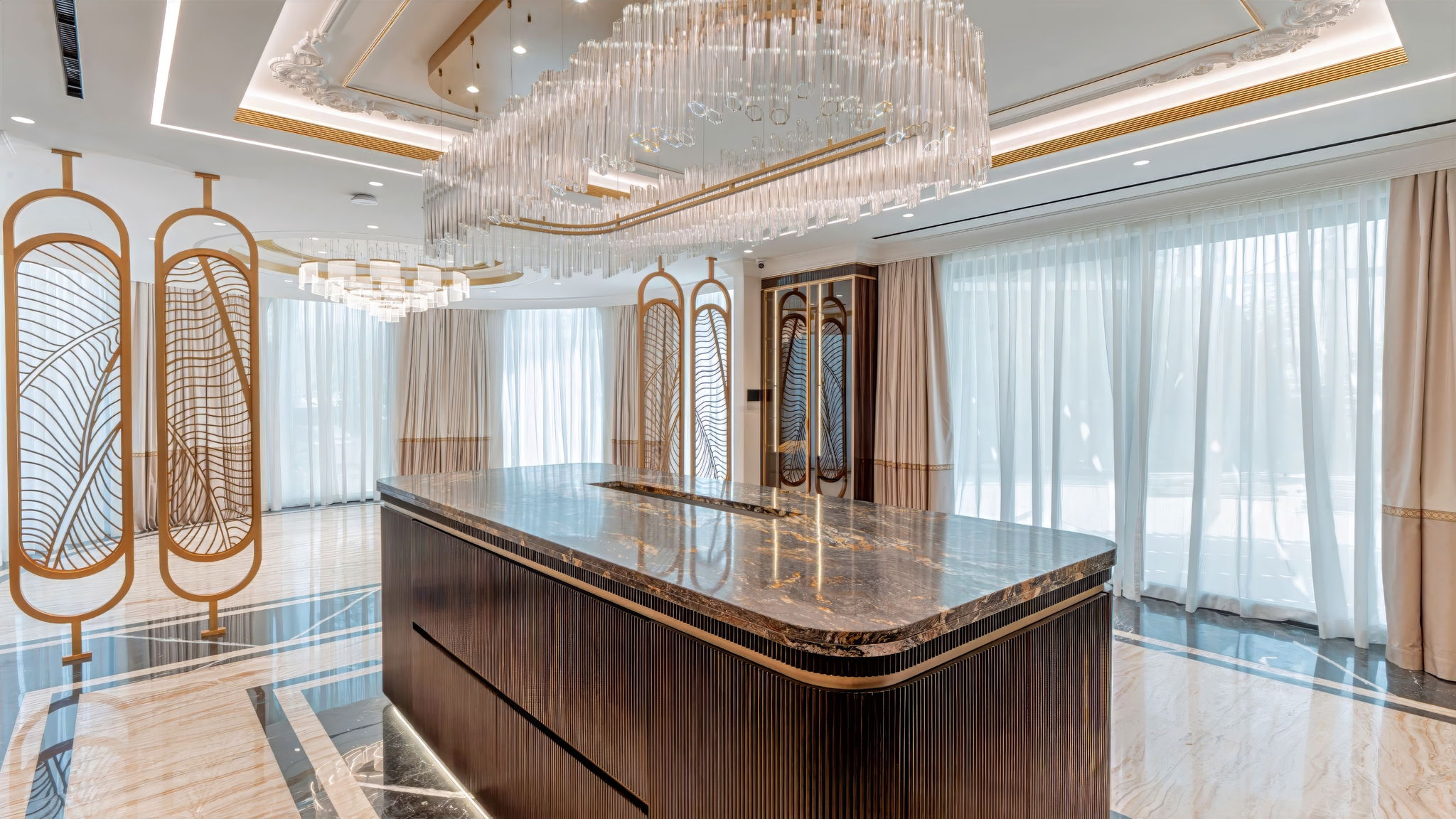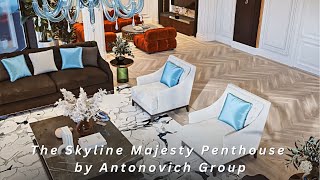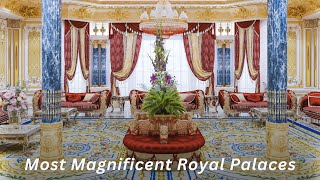CHOICES OF MARBLE FOR A KITCHEN
If you enjoy interior decorating, you've definitely spent some time ogling marble's rich veining and majesty depth. The beauty of marble makes it a work of art in and of itself, which is why many great sculptures and works of art are made of it or contain it. Because marble is a popular stone and is notorious for being scratch- and stain-prone, many designers advise homeowners to use it only in low-traffic areas, such as chair rails, side tables, and maybe a bathroom vanity. For bathroom inspiration, browse luxury bathroom interior photos. This is disappointing because big applications like luxury Dubai kitchen countertops and backsplashes are where marble's spectacular veins and swirls are best seen. See villa kitchen design for large-scale marble use. If you're willing to put in a little extra effort in terms of maintenance or a mental adjustment toward the blemishes brought on by everyday living, marble may be employed in kitchen interior design. They also offer turnkey interior design in Jeddah.
Marble has been a symbol of tradition and grandeur for ages. Marble is a perfect building material for both architecture and fine art since it can support the enormous weight. Just picture the magnificent marble columns seen in antique buildings! Outdoor additions such as pergola design ideas can complement marble exteriors and columns. When limestone is subjected to intense heat and pressure over an extended period of time, marble is formed. Marble is still employed in architecture today, including in office buildings and houses of worship and in luxury bedroom design. The same qualities that make marble ideal for sculpture and other practical uses can also make it more prone to etching, staining, and scratching. Paired with contemporary pieces like Cappellini NEW, marble can balance classic and modern interiors. Marble is frequently used in sculpting because it has a Mohs hardness rating of 3, making it a "soft" stone. This implies that marble worktops in the luxury interior kitchen are more likely to scratch and scuff than other materials like granite or quartz. Additionally, marble is a porous stone, making it more vulnerable to stains from abrasive cleaners or acidic substances. When we discuss marble upkeep farther down, we'll address these concerns.
Because marble is found in deposits that may be hundreds of feet deep and is typically cut out of mountains in gigantic slabs, it is perfect for large applications like kitchen countertops. Every marble countertop, backsplash, and tabletop is genuinely one-of-a-kind since each slab is distinct and there is a lot of variance from one section to the next. Additionally, the brilliant color of the traditional white marble provides the kitchen a sparkling, new appearance and may enliven a room with little natural light; combined with floor-to-ceiling glass windows, marble brightens dark kitchens. Marble comes in a wide variety of colors, from striking Forest Green to cool Tropical Blue to earthy Sequoia Brown Leather, despite the fact that white marble is the most well-known color in the world of natural stone. The more affordable alternative, Carrara marble, often features tiny veining that gives the stone more silver and grey hues overall. Although you can occasionally encounter slabs with more pronounced veins, Carrara typically has a more uniform look due to less pronounced variance in the various parts. Marble may be polished to get the recognizable shine that brings out the stone's brilliant whites and glitter. This is the most preferred choice since it makes the stone look more opulent and is simpler to maintain. However, polished marble is more likely to display streaks, scuffs, scratches, and etches, so your marble may become more noticeable over time as your kitchen wears on it. Honed marble has a matte surface that ranges from fully flat to semi-matte. This matte finish "tones down" the feel of the marble so that it is softer and warmer, rather than clean and sterile, and is a little more forgiving when it comes to scuffs and scratches. While counters with a honed finish may conceal scratches, they also make the stone more porous, prone to stains, and need more regular resealing. See hall interior design ideas for ways to use marble in circulation spaces.



